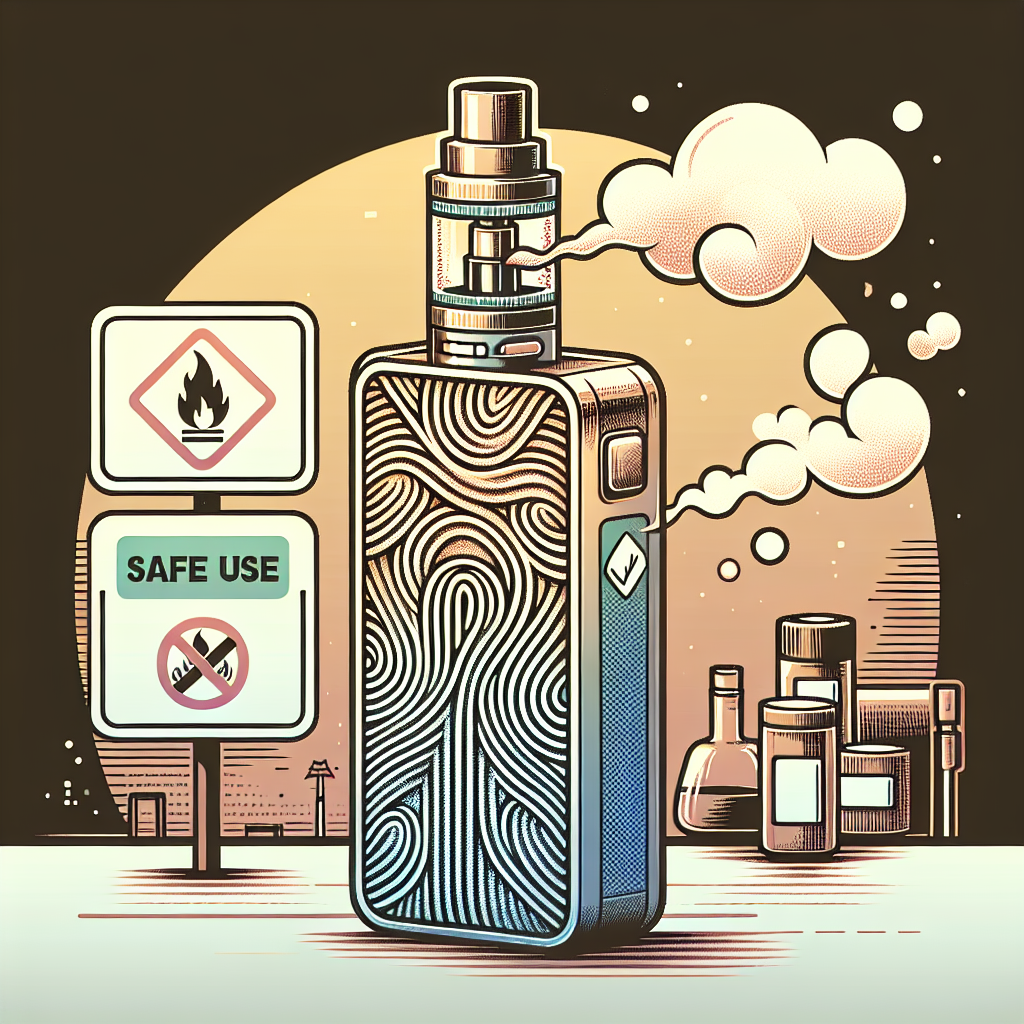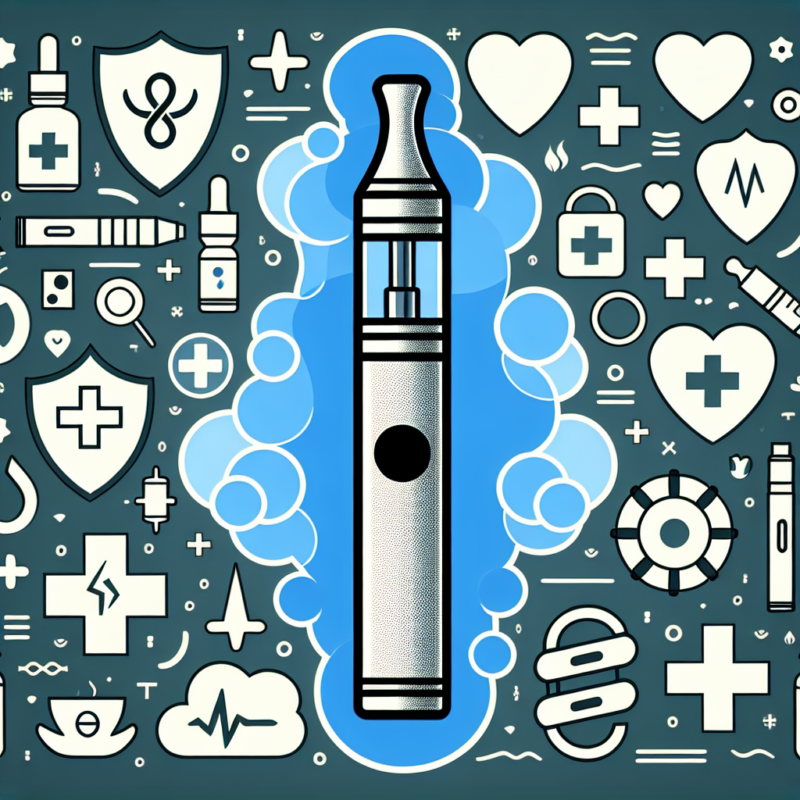Blog
Are ripple vapes safe
The Potential Health Risks of Using Ripple Vapes: Are ripple vapes safe
Are ripple vapes safe to use? Vaping has become increasingly popular in recent years, with many people turning to e-cigarettes as an alternative to traditional smoking. One type of e-cigarette that has gained attention is the ripple vape. These devices use a unique technology that creates a ripple effect in the vapor, giving users a smoother and more flavorful experience. However, with the rise in popularity of ripple vapes, questions have been raised about their safety. Are ripple vapes safe to use?
To answer this question, we must first understand how ripple vapes work. Unlike traditional e-cigarettes, which use a heating coil to vaporize the liquid, ripple vapes use ultrasonic technology. This technology creates high-frequency vibrations that turn the e-liquid into a fine mist, producing a smoother and more flavorful vapor. While this may sound appealing, it also raises concerns about potential health risks.
One of the main concerns with ripple vapes is the potential for exposure to harmful chemicals. E-liquids used in these devices typically contain a combination of propylene glycol, vegetable glycerin, flavorings, and nicotine. When heated, these ingredients can produce toxic chemicals such as formaldehyde and acrolein. While these chemicals are also found in traditional cigarettes, the levels produced by ripple vapes may be higher due to the ultrasonic technology used.
Furthermore, the long-term effects of inhaling these chemicals are still unknown. Studies have shown that exposure to formaldehyde and acrolein can lead to respiratory issues and even cancer. While the levels produced by ripple vapes may not be as high as traditional cigarettes, the potential for harm still exists.
Another concern with ripple vapes is the potential for nicotine addiction. Many e-liquids used in these devices contain nicotine, which is highly addictive. The ultrasonic technology used in ripple vapes allows for a faster absorption of nicotine into the bloodstream, making it easier to become addicted. This is especially concerning for young people who may be attracted to the flavors and smoothness of ripple vapes.
Moreover, there have been reports of ripple vapes exploding or catching fire. This is due to the lithium-ion batteries used in these devices, which can overheat and cause a fire. While this is a rare occurrence, it is still a potential risk that users should be aware of.
In addition to the potential health risks, there are also concerns about the lack of regulation in the manufacturing of ripple vapes. Unlike traditional cigarettes, which are heavily regulated, e-cigarettes are not subject to the same strict guidelines. This means that there is no guarantee of the quality or safety of the products being sold.
So, are ripple vapes safe? The answer is not a simple yes or no. While they may be a safer alternative to traditional cigarettes, they still pose potential health risks. The lack of long-term studies and regulation in the industry make it difficult to determine the exact level of risk. However, users need to be aware of these potential risks and make an informed decision about whether or not to use ripple vapes.
In conclusion, while ripple vapes may offer a smoother and more flavorful vaping experience, they also come with potential health risks. The exposure to harmful chemicals, risk of nicotine addiction, and lack of regulation are all factors that users should consider before using these devices. As with any product, it is important to weigh the potential risks against the benefits and make an informed decision. Ultimately, the safety of ripple vapes is still a topic of debate and further research is needed to fully understand their impact on health.
Are Ripple Vapes Safe: Understanding the Ingredients in Ripple Vapes and Their Effects on the Body

Ripple vapes have become increasingly popular in recent years, with many people turning to them as an alternative to traditional cigarettes. These electronic devices use a liquid solution, known as e-juice, which is heated and turned into vapor for inhalation. While they may seem like a safer option compared to smoking, there are still concerns about the safety of ripple vapes and their ingredients. In this article, we will delve into the ingredients found in ripple vapes and their potential effects on the body.
The main ingredient in ripple vapes is the e-juice, which is a mixture of propylene glycol (PG), vegetable glycerin (VG), flavorings, and nicotine (optional). PG and VG are both food-grade substances commonly used in various products such as cosmetics and food. They are also used in medical inhalers, making them generally considered safe for inhalation. However, there are still some potential risks associated with these ingredients when used in ripple vapes.
PG is a colorless and odorless liquid that is responsible for carrying the flavorings and nicotine in e-juice. It is also used to create the vapor when heated. While it is generally recognized as safe for consumption, some people may experience irritation in their throat and lungs when inhaling PG. This is because PG is a hygroscopic substance, meaning it absorbs moisture from its surroundings. When inhaled, it can cause dryness in the throat and lungs, leading to irritation and coughing. However, this is more common in people with pre-existing respiratory conditions.
On the other hand, VG is a thicker and sweeter liquid that is responsible for producing the vapor in ripple vapes. It is derived from vegetable oils and is also considered safe for consumption. However, some people may experience allergic reactions to VG, such as skin irritation or hives. This is more common in people with allergies to vegetable oils. Additionally, VG has a slower absorption rate compared to PG, which means it may take longer for the effects of nicotine to kick in when using e-juice with a higher VG content.
Flavorings are another crucial ingredient in ripple vapes, as they are responsible for the various flavors available in e-juice. These flavorings are usually food-grade and considered safe for consumption. However, there have been concerns about the potential risks of inhaling these flavorings. Some studies have shown that certain flavorings, such as diacetyl, can cause a condition known as “popcorn lung.” This condition is characterized by scarring and inflammation in the lungs, leading to difficulty breathing. While this is more common in workers exposed to high levels of diacetyl in factories, it is still a concern for those who regularly use ripple vapes.
Lastly, nicotine is an optional ingredient in e-juice, and its use is a personal choice. Nicotine is a highly addictive substance found in tobacco products, and it is also present in ripple vapes. While it is not considered a carcinogen, it can have adverse effects on the body, such as increasing heart rate and blood pressure. It can also lead to addiction and withdrawal symptoms when trying to quit. Therefore, it is essential to use ripple vapes with caution and be mindful of the nicotine content in e-juice.
In conclusion, while ripple vapes may seem like a safer alternative to traditional cigarettes, there are still potential risks associated with their ingredients. PG and VG are generally considered safe for consumption, but they can irritate some individuals. Flavorings may also pose a risk, and nicotine is a highly addictive substance. It is crucial to be aware of these ingredients and their potential effects on the body when using ripple vapes. As with any product, it is always best to use them in moderation and consult a healthcare professional if you have any concerns.
Comparing the Safety of Ripple Vapes to Traditional Vaping Methods
Vaping has become increasingly popular in recent years, with many people turning to this alternative form of smoking as a supposedly safer option. However, with the rise of new vaping methods, such as ripple vapes, questions have been raised about their safety. Are ripple vapes a safer alternative to traditional vaping methods? In this article, we will compare the safety of ripple vapes to traditional vaping methods and explore the potential risks associated with both.
Firstly, let’s understand what ripple vapes are. Ripple vapes, also known as pod systems, are a type of electronic cigarette that uses a small, disposable pod filled with e-liquid. These pods are designed to be easily replaced, making them a convenient option for vapers. On the other hand, traditional vaping methods involve using a larger device, often with a refillable tank, to heat and vaporize the e-liquid.
One of the main concerns with traditional vaping methods is the use of nicotine in e-liquids. Nicotine is a highly addictive substance and can have adverse effects on the body, including increased heart rate and blood pressure. However, ripple vapes have been marketed as a lower nicotine option, with some pods containing as little as 3mg of nicotine. This may make them a more appealing option for those looking to reduce their nicotine intake.
Another potential risk associated with traditional vaping methods is the use of diacetyl in e-liquids. Diacetyl is a chemical compound that has been linked to a condition known as “popcorn lung,” which causes scarring of the tiny air sacs in the lungs. While diacetyl is banned in e-liquids in many countries, it is still present in some products. On the other hand, ripple vapes do not use diacetyl in their e-liquids, making them a safer option in this regard.
One of the biggest concerns with ripple vapes is the lack of regulation and oversight in the industry. Unlike traditional vaping methods, which are subject to strict regulations and testing, ripple vapes are relatively new and have not yet been thoroughly studied. This means that the long-term effects of using ripple vapes are still unknown. Additionally, the lack of regulation means that there is a higher risk of faulty or unsafe products being sold on the market.
Another potential risk associated with ripple vapes is the use of flavorings in e-liquids. While these flavorings may make vaping more enjoyable, they can also pose health risks. Some flavorings have been found to contain harmful chemicals, such as diacetyl, which can have adverse effects on the respiratory system. However, it is worth noting that traditional vaping methods also use flavorings in their e-liquids, so this risk is not exclusive to ripple vapes.
In terms of safety, traditional vaping methods have been around for longer and have been studied more extensively. This means that we have a better understanding of the potential risks associated with these devices. On the other hand, ripple vapes are relatively new, and their long-term effects are still unknown. This makes it difficult to definitively say whether they are a safer option than traditional vaping methods.
In conclusion, while ripple vapes may have some advantages over traditional vaping methods, such as lower nicotine levels and the absence of diacetyl, they also come with their own set of potential risks. The lack of regulation and oversight in the industry is a significant concern, and more research is needed to fully understand the long-term effects of using ripple vapes. Ultimately, the decision to use ripple vapes or traditional vaping methods should be based on personal preference and a thorough understanding of the potential risks involved.
